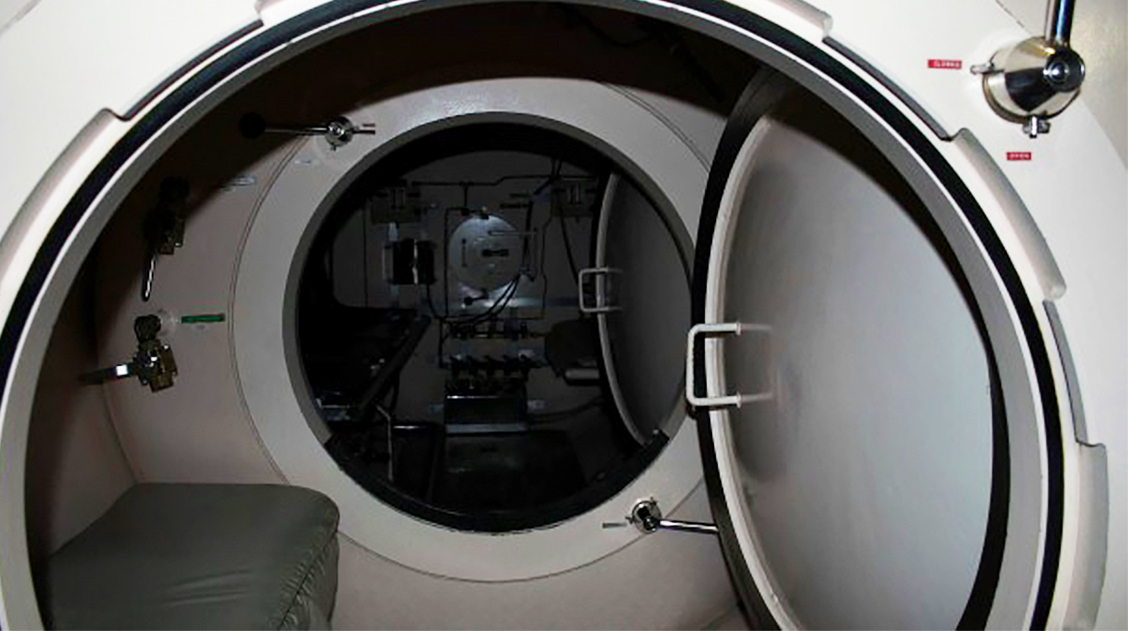
Hyperbaric Therapy and Pressure Chambers
Hyperbaric therapy has been around for centuries. Despite this, few fully understand it. Generally, it works by modulating the amount of oxygen reaching different areas of the body.
With the help of insightful MDPI research, let’s take a look at how hyperbaric therapy can be used more effectively in the future, how it affects the body, and the areas it is currently used in.
What is a hyperbaric pressure chamber?
A pressure chamber, often used for hyperbaric oxygen treatment (HBOT), is a machine that increases air pressure.
Hyperbaric therapy tends to take place in a pressure chamber because the air pressure can be adequately modified. With the increased air pressure that can be generated in these machines, much higher oxygen levels exist than in the real world. Increased oxygen may help to recover tissue, reverse the negative effects of hypoxia, and increase the concentration of oxygen in the blood.
When inside a pressure chamber, patients will feel the typical effects of increased air pressure. This includes the feeling of popped ears that’s often experienced at high altitudes. In terms of their appearance, pressure chambers are large machines in which people sit or lie down. Due to the large amount of time spent in pressure chambers, the machines contain either seats or beds, and some patients might even experience a little discomfort.
Hyperbaric pressure chambers are different from hyperboric chambers. In hyperbaric pressure chambers, air pressure is increased, whereas in hyperboric chambers air pressure is reduced.
How does hyperbaric oxygen therapy work?
During hyperbaric therapy, increased oxygen is used during treatment at pressures of above 1 atmosphere absolute (ATA) to increase the amount of oxygen reaching the tissue. As noted, increased air pressure means that a greater amount of oxygen can reach the tissues in question.
In a paper published in MDPI’s Medicina, authors Balestra and Kot refer to hyperbaric therapy as “essentially, ‘intermittent oxygen’ exposure”, which explains how important oxygen is to the process. Of course, oxygen is pivotal to the functioning of all mammals. Both increased and decreased levels of oxygen induce different mechanisms in the body. And these mechanisms can be triggered and manipulated with treatment.
In fact, much of the research on oxygen therapy relates to the hyperoxic-hypoxic paradox. This paradox is described as ‘biological fooling’ in an article in Biomolecules. In the paper, the authors provide an overview of oxygen physiology and the effects that hypoxia (lack of oxygen) and hyperoxia (excess oxygen) have on the functioning of cells.
Although intermittently inducing hyperoxia can help to enhance the levels of oxygen reaching areas of the body, there are limits and safety procedures put in place during such therapies. Describing HBOT protocols, the authors of the same article note that repeated daily sessions are often limited to 60–90 minutes. And a maximum oxygen partial pressure of 2.4 ATA is advised. These protocols can help to avoid any adverse health issues, including oxygen toxicity.
The continued research on hyperbaric therapy has helped to ensure safety during this procedure. Professionals exercise extreme care to ensure patient wellbeing. Importantly, the increased research over the years has helped to develop a better understanding of its effects. This has led to the identification of a number of conditions for which hyperbaric therapy is advised against, including asthma.
Development of hyperbaric therapy
Even though pressure chambers look like very modern machines, hyperbaric therapy can be traced back hundreds of years.
Interestingly, one of the first documented uses of hyperbaric therapy dates back to the 17th century. In 1662, British physician Nathaniel Henshaw used pressurized containers to treat patients. A widespread interest in the effects of different altitudes and pressures on the human body followed.
Centuries later, in 1878, Paul Bert applied pressurized therapy to counteract the effects of decompression sickness. This innovation would later lead to the use of pressure chamber therapy during the Second World War. Due to its effectiveness, hyperbaric oxygen treatment is still most commonly used for the treatment of decompression sickness today.
Although there has been much debate about the use of hyperbaric therapy, recent research provides some interesting findings to consider.
Applications of hyperbaric therapy
More recently, researchers have found hyperbaric therapy to be useful in treating a number of other health-related issues. Debates still exist about its effectiveness, however, which makes the research all the more interesting.
For example, a study in The International Journal of Environmental Research and Public Health found that hyperbaric therapy is useful in the treatment of diabetic foot ulcers. Diabetic foot ulcers affect millions of people around the world every year. This study emphasizes the importance of hyperbaric therapy in reviving dead or oxygen-starved tissue, a symptom associated with diabetic foot ulcers. By treating the condition properly, more serious outcomes, such as amputation or fatalities, can be avoided.
However, other studies question the use of HBOT for the treatment of carbon monoxide poisoning, despite its clinical use in some places. As its effectiveness is frequently debated in the literature, there is a continued need for research on hyperbaric therapy.
Research at MDPI
For more information on the range of fields that hyperbaric therapy is used in, have a look at our Special Issue titled “Hyperbaric Medicine” in the journal Medicina. This Special Issue features articles that seek to answer questions of ‘how much’ and ‘how often’ the treatment should be used, as well as to discover new areas where it may be effective.










